-

Sustainable business is simply good business
Making the case for sustainability is getting easier
Sustainable businesses reduce energy costs, lower environmental impacts, and increase productivity and competitiveness, leading to greater value for stakeholders, employees and customers.
-
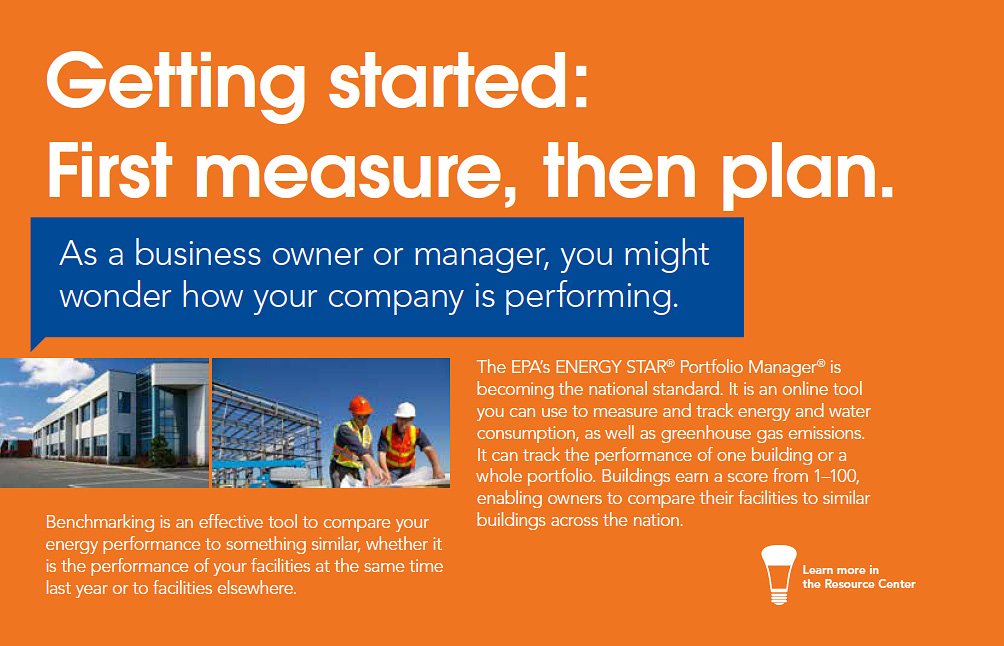
Getting started: First measure, then plan.
As a business owner or manager, you might wonder how your company is performing.
The EPA's ENERGY STAR® Portfolio Manager® is
becoming the national standard. It is an online tool
you can use to measure and track energy and water
consumption, as well as greenhouse gas emissions.
It can track the performance of one building or a
whole portfolio. Buildings earn a score from 1-100,
enabling owners to compare their facilities to similar
buildings across the nation.
Benchmarking is an effective tool to compare your
energy performance to something similar, whether it
is the performance of your facilities at the same time
last year or to facilities elsewhere.
-
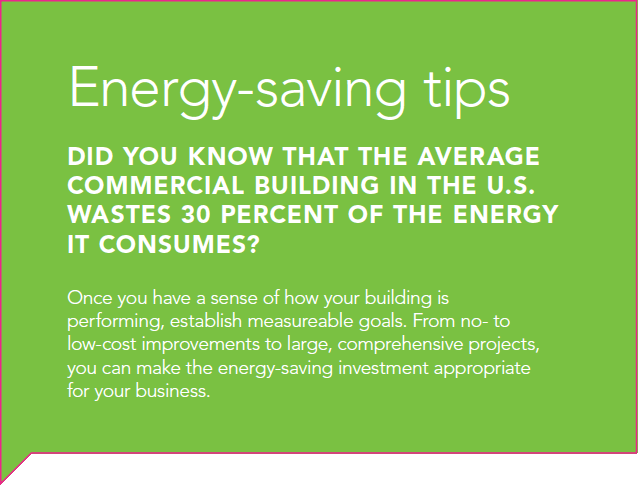
Energy-saving tips
Did you know that the average commercial building in the U.S. wastes 30% of the energy it consumes?
Once you have a sense of how your building is
performing, establish measureable goals. From no- to
low-cost improvements to large, comprehensive projects,
you can make the energy-saving investment appropriate
for your business.
-

Operations and Maintenance
- Conduct a nighttime audit to see what is on that doesn't need to be.
- Install building system controls to eliminate waste by automatically adjusting energy use to operating needs.
- Perform monthly maintenance of heating and cooling equipment to guarantee efficient operation throughout the year.
- Set goals and a methodology to track and reward improvements among building users.
- Conduct a continuous review of processes and systems to optimize efficiencies and save money.
-
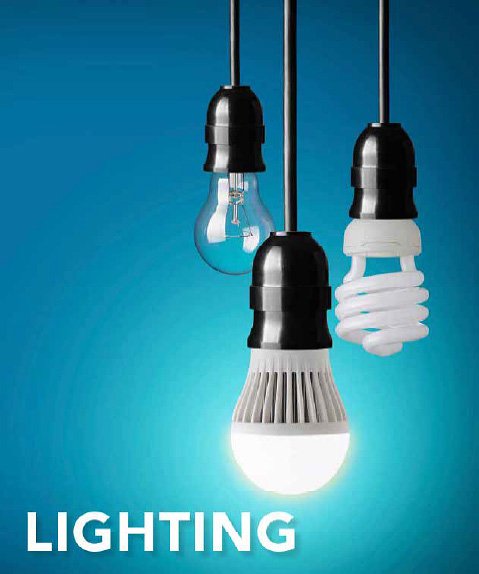
Lighting
- Upgrade existing lighting using high-efficiency solutions.
- Install occupancy sensors To better manage lighting in high- and low-use areas.
- Remove lighting in areas where lighting exceeds the needs of the occupants.
- Use natural light whenever feasible.
- Reduce lighting during non-business hours.
- Review your outside lighting needs. You may be able to turn off some of the lighting, use it for fewer hours, or use lower wattage lamps.
-
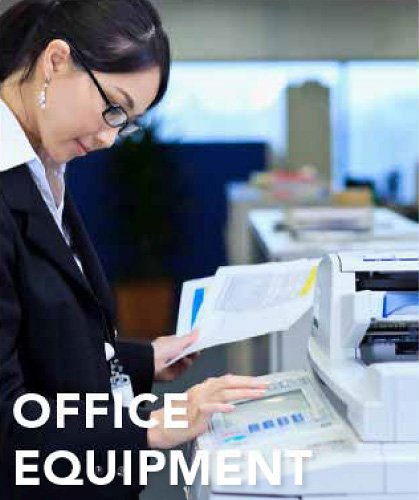
Office Equipment
- Choose energy efficient or ENERGY-STAR® equipment when replacing refrigeration, appliances, copiers, printers and computers.
- Consider using a laptop computer instead of a desktop system, which can save 50-80% in electricity costs.
- Encourage employees to shut their computers all the way off after hours.
-
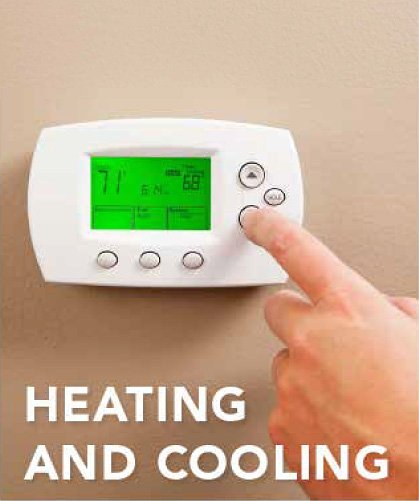
Heating & Cooling
- Replace manual-dial thermostats with inexpensive programmable thermostats to save 5-15% on heating costs.
- Make sure your HVAC systems are in proper working order.
- Inspect or replace filters and clean the condenser coils (outdoor unit) regularly to ensure air flow.
- Don't heat or cool unused space.
-
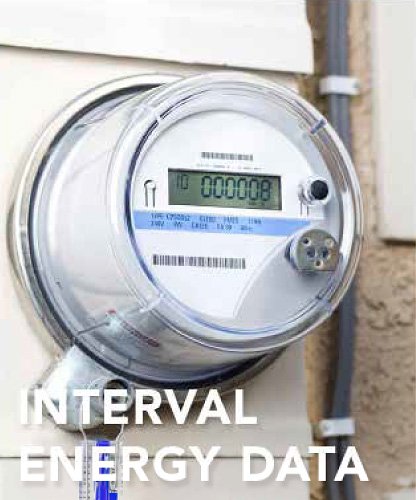
Interval Energy Data
- Pinpoint areas for improvement and optimize
savings by analyzing interval energy use data.
- Businesses can tweak operations to achieve
energy savings beyond traditional upgrades
by utilizing real-time, granular information.

-

Strategic Energy Management
Follow the ENERGY STAR® guidelines for
energy management:
- Make a commitment.
- Assess performance.
- Set goals.
- Create an action plan.
- Implement the action plan.
- Evaluate the progress.
- Recognize achievements.
-
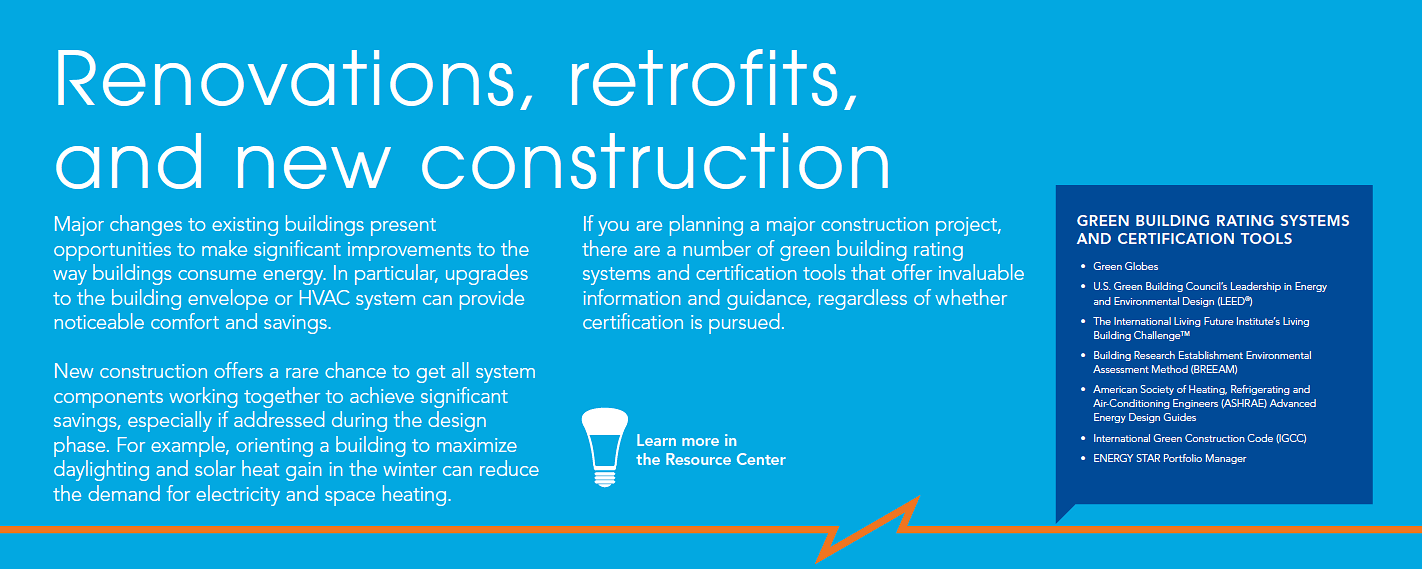
Renovations, retrofits,
and new construction
Major changes to existing buildings present
opportunities to make significant improvements to the
way buildings consume energy. In particular, upgrades
to the building envelope or HVAC system can provide
noticeable comfort and savings.
New construction offers a rare chance to get all system
components working together to achieve significant
savings, especially if addressed during the design
phase. For example, orienting a building to maximize
daylighting and solar heat gain in the winter can reduce
the demand for electricity and space heating.
If you are planning a major construction project,
there are a number of green building rating
systems and certification tools that offer invaluable
information and guidance, regardless of whether
certification is pursued.
Green Building Rating Systems and Certification Tools:
- Green Globes
- U.S. Green Building Council's Leadership in Energy
and Environmental Design (LEED®)
- The International Living Future Institute's Living
Building Challenge™
- Building Research Establishment Environmental
Assessment Method (BREEAM)
- American Society of Heating, Refrigerating and
Air-Conditioning Engineers (ASHRAE) Advanced
Energy Design Guides
- International Green Construction Code (IGCC)
- ENERGY STAR® Portfolio Manager
-

Save some green
Every dollar you save on operating
costs is a dollar you can redirect
to your core business.
Energize Connecticut℠ can help you identify smart
energy improvements that will deliver the greatest return
at the lowest cost — plus deep savings for years to come.
We can also connect you with programs, tax credits,
incentives and funding resources that make energy
efficiency and renewable energy upgrades feasible.
Outlined below are just a few of the solutions
that Energize Connecticut offers:
- Appliances and equipment
- Retrofits (upgrading to state of the art technology)
- New construction
- New equipment
- Operations and maintenance
- Process improvements
- Sustainability strategies













